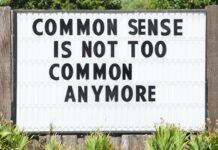The United States is known for its economic and military prowess. Its diversity of cultures and ideas has made the U.S. a destination for people from all over the world in search of the American dream. Despite this fact, even the wealthiest country in the world deals with poverty.
According to the U.S. Census Bureau, 42.31 million people live in poverty as of 2020. While this number may seem staggering, it is roughly 12.75% of the total population, which currently stands at 331.9 million citizens. Economic self-sufficiency is a critical component of uplifting Americans out of poverty. While this hurdle is challenging for most, census data cited by the Aspen Institute “indicated that 3.5 million Americans lifted themselves out of poverty in 2015” and those numbers continue to rise, albeit not fast enough for those tasked with studying and creating ways to solve this problem.
While these numbers are staggering, they only tell part of the story. Poverty in the U.S. is a multifaceted issue, impacted by a range of factors including economic policies, access to education and availability of health care. The numbers have improved since 2020. In fact, in 2022, the official poverty rate was 11.5%, translating to 37.9 million people living in poverty. This rate has remained relatively unchanged since 2021, indicating the persistence of poverty across the nation.
The Supplemental Poverty Measure for 2022 was 12.4%, marking an increase of 4.6 percentage points from 2021. This increase, the first of its kind since 2010, can be largely attributed to changes in federal tax policy. The expiration of temporary expansions to the Child Tax Credit and the Earned Income Tax Credit, as well as the end of pandemic-era stimulus payments, have played a significant role in this rise.
The economic landscape of the U.S. in 2022 showed a decline in real median household income by 2.3%, settling at $74,580. This decline was influenced by a 7.8% increase in inflation — the largest annual rise since 1981. The real median earnings of all workers also decreased by 2.2% between 2021 and 2022.
The distribution of poverty in the United States is uneven, with significant variations across age groups and geographical regions. The child poverty rate in 2022 was reported at 16.3%, higher than the overall rate. In contrast, the poverty rate for those aged 65 and over was lower, at 10.9%. The geographical distribution of poverty rates presents a diverse picture, with more than half of the states in the Southern region reporting child poverty rates exceeding 18%.
The persistence of poverty in the United States calls for a multifaceted approach to address the issue. Economic self-sufficiency is key to lifting Americans out of poverty. However, achieving this requires a combination of robust economic policies, accessible education and comprehensive health care. The Aspen Institute has highlighted the progress made, citing that 3.5 million Americans lifted themselves out of poverty in 2015. Yet, the pace of this progress is not fast enough for those tasked with studying and creating solutions to this pervasive problem.
To combat poverty effectively, targeted strategies tailored to the unique needs of different demographics and regions are vital. Investment in education and job training, alongside policies supporting wage growth and affordable health care, are key factors in reducing poverty. Additionally, tackling systemic issues that contribute to income inequality and economic disparities is essential.
While the United States offers ample opportunities, it also faces the daunting challenge of poverty. A concerted effort from policymakers, community leaders and citizens is required to diminish poverty and ensure the American dream is achievable for all.





























